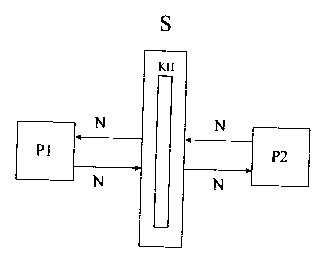Some of the information on this Web page has been provided by external sources. The Government of Canada is not responsible for the accuracy, reliability or currency of the information supplied by external sources. Users wishing to rely upon this information should consult directly with the source of the information. Content provided by external sources is not subject to official languages, privacy and accessibility requirements.
Any discrepancies in the text and image of the Claims and Abstract are due to differing posting times. Text of the Claims and Abstract are posted:
| (12) Patent Application: | (11) CA 2340708 |
|---|---|
| (54) English Title: | METHOD FOR CONVERTING DIFFERENT DATA FORMATS |
| (54) French Title: | PROCEDE DE CONVERSION DE FORMATS DE DONNEES DIFFERENTS |
| Status: | Deemed Abandoned and Beyond the Period of Reinstatement - Pending Response to Notice of Disregarded Communication |
| (51) International Patent Classification (IPC): |
|
|---|---|
| (72) Inventors : |
|
| (73) Owners : |
|
| (71) Applicants : |
|
| (74) Agent: | SMART & BIGGAR LP |
| (74) Associate agent: | |
| (45) Issued: | |
| (86) PCT Filing Date: | 1999-08-17 |
| (87) Open to Public Inspection: | 2000-03-02 |
| Availability of licence: | N/A |
| Dedicated to the Public: | N/A |
| (25) Language of filing: | English |
| Patent Cooperation Treaty (PCT): | Yes |
|---|---|
| (86) PCT Filing Number: | PCT/DE1999/002575 |
| (87) International Publication Number: | WO 2000011560 |
| (85) National Entry: | 2001-02-15 |
| (30) Application Priority Data: | ||||||
|---|---|---|---|---|---|---|
|
Current multi-processor systems, such as communication systems, are generally
provided with processors for processing various data formats. The information
exchanged between such processors must therefore be submitted to a format
conversion. The state-of-the-art techniques involve heavy operations in the
compiler or a standardised data format in the interface (e.g. ASN.1) in order
to reach this goal. The present invention provides a more efficient method
that involves using a tool for automatically introducing a conversion process
in the software interface between the processors.
Les systèmes multiprocesseurs actuels tels que par ex. les systèmes de communication sont en règle générale équipés de processeurs qui traitent des formats de données divers. Des informations qui sont échangées entre des processeurs de ce type doivent donc être soumises à une conversion de format. Dans l'état actuel de la technique, des interventions importantes dans le compilateur ou un format de données standardisé dans l'interface (par ex. ASN.1) sont nécessaires à cet effet. Selon la présente invention, une procédure plus efficace est obtenue grâce à la présence d'un outil à l'aide duquel une procédure de conversion est introduite automatiquement dans l'interface logicielle entre les processeurs.
Note: Claims are shown in the official language in which they were submitted.
Note: Descriptions are shown in the official language in which they were submitted.

2024-08-01:As part of the Next Generation Patents (NGP) transition, the Canadian Patents Database (CPD) now contains a more detailed Event History, which replicates the Event Log of our new back-office solution.
Please note that "Inactive:" events refers to events no longer in use in our new back-office solution.
For a clearer understanding of the status of the application/patent presented on this page, the site Disclaimer , as well as the definitions for Patent , Event History , Maintenance Fee and Payment History should be consulted.
| Description | Date |
|---|---|
| Inactive: IPC expired | 2019-01-01 |
| Inactive: IPC expired | 2018-01-01 |
| Inactive: IPC from MCD | 2006-03-12 |
| Application Not Reinstated by Deadline | 2003-08-18 |
| Time Limit for Reversal Expired | 2003-08-18 |
| Deemed Abandoned - Failure to Respond to Maintenance Fee Notice | 2002-08-19 |
| Inactive: Cover page published | 2001-05-15 |
| Inactive: First IPC assigned | 2001-05-13 |
| Letter Sent | 2001-04-20 |
| Letter Sent | 2001-04-20 |
| Inactive: Notice - National entry - No RFE | 2001-04-20 |
| Application Received - PCT | 2001-04-14 |
| Application Published (Open to Public Inspection) | 2000-03-02 |
| Abandonment Date | Reason | Reinstatement Date |
|---|---|---|
| 2002-08-19 |
The last payment was received on 2001-07-12
Note : If the full payment has not been received on or before the date indicated, a further fee may be required which may be one of the following
Please refer to the CIPO Patent Fees web page to see all current fee amounts.
| Fee Type | Anniversary Year | Due Date | Paid Date |
|---|---|---|---|
| Registration of a document | 2001-02-15 | ||
| Basic national fee - standard | 2001-02-15 | ||
| MF (application, 2nd anniv.) - standard | 02 | 2001-08-17 | 2001-07-12 |
Note: Records showing the ownership history in alphabetical order.
| Current Owners on Record |
|---|
| SIEMENS AKTIENGESELLSCHAFT |
| Past Owners on Record |
|---|
| ANDREAS BUCHELT |
| RUDOLF HUBER |
| ULRICH KLEBER |
| WALTER MAYER |